WARNING!
This is a super-ginormous post! But do not feel discouraged! For there are contents aplenty to help you! It's like getting large fries instead of medium fries but eating the rest of the large fries anyways!I would like to again thank everyone who's participated in the Tridimensional Character form thread, and I am glad to know that people are using the form to better understand their characters. So, seeing the success of that thread, I'd like to take the next step into conceptual writing: Understanding and Identifying Character Archetypes.
RIGHT OFF THE BAT, I must tell you that
ARCHETYPES AND STEREOTYPES ARE NOT THE SAME THING! Stereotypes are often opinionated exagerrations of popular trends as far as characters go, archetypes are basic outlines and framework for which a character fits into a story. Archetypes help us understand how a character functions in a story without going into the meat of the detail, just the outline.
As prime examples of character archetypes, I will be primarily pulling references from the easiest story to understand ever (Star Wars), Evan Dahm's Rice Boy, and our very own VOID characters in case you don't catch the other references (but if you were unfamiliar with Star Wars, then you were born in the WRONG GENERATION =|). Other references may arise, thus a short description thereafter shall suffice for those who don't pick up on the note.
Here are the archetypes in summary:
(SUPER IMPORTANT NOTE: Don't take these literally! You can have other things represent these archetypes without them even being real characters!)
(THIS TOO, IS A SUPER IMPORTANT NOTE:
Rice Boy is the creation of Void's very own Mr. Robot, and is a wonderful example of the things I will discuss. If you have not read Rice Boy, then you are not with the Awesome Club.
BUT IF YOU CLICK HERE, YOU WILL BE AWESOME.)
I. THE HERO - The protagonist, who sets out upon a Call to Adventure (explained in next lecture); functions as a window to the audience, and the martyr of change, which is always present in a traditional hero.

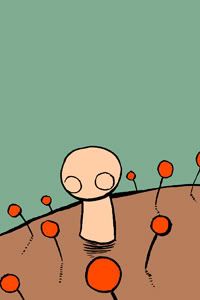
 in Star Wars: Luke Skywalker is a traditional hero; a farmboy who, by chance, receives Princess Leia's distress call, has his home destroyed, then sets off on an adventure.
in Star Wars: Luke Skywalker is a traditional hero; a farmboy who, by chance, receives Princess Leia's distress call, has his home destroyed, then sets off on an adventure.
in Rice Boy: Rice Boy is a traditional hero; a humble, limbless creature who is visited by T-O-E with a prophecy, and sets out on good faith towards adventure.
in VOID: Jimmy Boom (by Kinuchio) is a traditional hero in every sense of the term. A fiery youth who uses his gifts to fight for peace and the defense of the weak.-- THE ANTI-HERO - An alternate branch of HERO, the ANTI-HERO (or RELUCTANT HERO) is often tossed into the fray without a choice. In this matter, an Anti-hero is not initially in control of his own fate as a Traditional Hero is. He differs fromt he CYNICAL HERO and the TRAGIC HERO (below) because he is neither seeking self-gain nor is destroyed by his flaws.
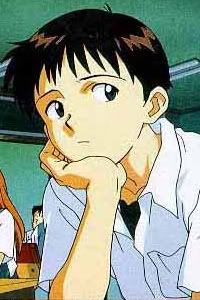

 from Neon Genesis Evangelion: Shinji Ikari is a modern example of the Reluctant Hero. He never strove to be what he became, but when circumstances arose in which he was to be a hero, he didn't back down. (thanks Pong)
from Neon Genesis Evangelion: Shinji Ikari is a modern example of the Reluctant Hero. He never strove to be what he became, but when circumstances arose in which he was to be a hero, he didn't back down. (thanks Pong)
from VOID: Gray (by Animeshen) is a Reluctant Hero, though we use the term 'hero' here lightly. Thrust into incidents she can't control, she is motivated by sheer circumstance. Depending on her character growth, she can evolve into a full-blown Anti-hero, or descend into Tragic Hero territory.The Pig (by Hiemie) is an extremely vague example of a Reluctant Hero. His story is driven by pure circumstance, until the Shadow (Bad Apple) reveals himself, and is soundly thwarted by The Pig simply being a pig. This is a tough one to analyze, because the Pig doesn't actually exhibit growth, but its very nature pulls it through the story.--THE CYNICAL HERO - A tarnished, failed hero, or a hero who otherwise lacks heroic qualities. Usually in the adventure for his/her/its own self-gain.

 in Star Wars: Han Solo is a cynical hero; a greedy smuggler who is only led into the conflict through the promise of money.
in Star Wars: Han Solo is a cynical hero; a greedy smuggler who is only led into the conflict through the promise of money.
in THE FRIDGE: The Swiss (by GPS-Device) has done away with any notion of prestige or honor he used to possess, and instead is driven to 'do what is right', even if it means soiling his own hands.
-- THE TRAGIC HERO - A hero who fails to develop or adapt, and is ultimately destroyed by his own flaws or inner demons. Oftentimes, a tragic hero, unlike a traditional hero, does not control his own fate; thus, a Tragic Hero may very well be a 'victim of fate', as it were.

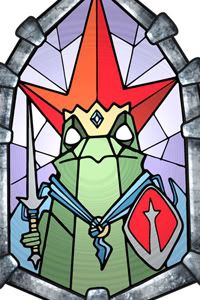
 in Star Wars: Anakin Skywalker is a tragic hero; a Jedi prodigy who was led astray by jealousy and impatience, and eventually fell to the Dark Side.
in Star Wars: Anakin Skywalker is a tragic hero; a Jedi prodigy who was led astray by jealousy and impatience, and eventually fell to the Dark Side.
in Rice Boy: Spatch I is a tragic hero; when given the prophecy by T-O-E and Calabash, he grew drunk with power, greed and influence, and it led to the corruption of Sunk. (Art by Chunkplex)
in VOID: Jules Saphir (by Video320) is on the way to becoming a Tragic Hero. If his Beyond Battle saga is of any indication, he is driven to slake his thirst for revenge against Andy Heller, even if it costs him his life.--THE CATALYST HERO - A hero who does not develop, but rather, inspires change in others around him. The lone gunman who strolls into town, saves the day, makes everyone happy, and rides off into the sunset, is a Catalyst hero.
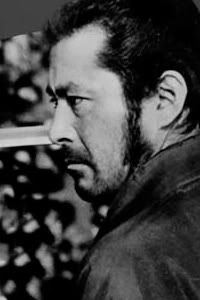
 Classic Example: The Toshiro Mifune character, Sanjuro, from Akira Kurosawa's samurai classic
Classic Example: The Toshiro Mifune character, Sanjuro, from Akira Kurosawa's samurai classic Yojimbo
is a traditional example of the catalyst hero. He strolls into town, settles the disputes, everyone's happy, and he leaves.
in VOID: Toro Joe (by TINMAN) can be considered a Catalyst Hero, even if he is portrayed as a villain by others (remember, we use the term HERO because Toro Joe is the Hero of his own story). While he shows little development himself, his very presence causes change in others around him.II. THE MENTOR - Something (doesn't have to be a person) that aids the HERO, by teaching him, giving him 'gifts', protecting him, or introducing him into "The Special World" (will come up in a later lecture).
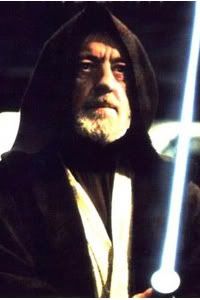
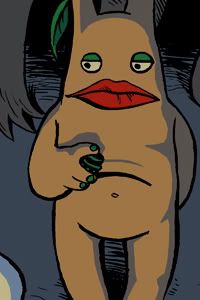
 in Star Wars: Obi-Wan Kenobi is a Mentor; one of the few remaining Jedi Knights who takes Luke under his wing after his home is destroyed.
in Star Wars: Obi-Wan Kenobi is a Mentor; one of the few remaining Jedi Knights who takes Luke under his wing after his home is destroyed.
in Rice Boy: The Tree Keeper is a Mentor; a mystical being who Rice Boy must seek out for more details on the prophecy as told by T-O-E.
in VOID: Dr. Boomington (by Kinuchio) serves as a mentor and guide for the Avant-Guardians. He is also literally Jimmy's father.III. THE HERALD - Something (see above parenthetical statement) that announces the coming of change, issues challenges to the HERO, and more often than not, delivers the Call to Adventure.
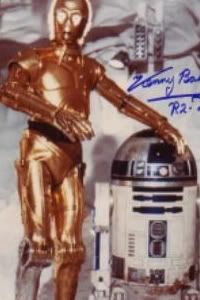
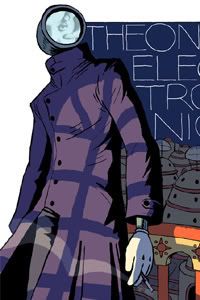
 in Star Wars: C3PO and R2-D2 are Heralds; their escape pod crash lands on Tatooine, where they must deliver Princess Leia's distress call. (Note: Heralds are sometimes referred to as 'Masters of Protocol'; C3PO is called a Protocol Droid)
in Star Wars: C3PO and R2-D2 are Heralds; their escape pod crash lands on Tatooine, where they must deliver Princess Leia's distress call. (Note: Heralds are sometimes referred to as 'Masters of Protocol'; C3PO is called a Protocol Droid)
in Rice Boy: The One Electronic (T-O-E) and Calabash are Heralds. They quite literally have to deliver an unknown prophecy to an unknown fulfiller so that the prophecy may be realized, no matter what it is.
in VOID: Cora Ruddel (by Angieness), Angela's mother, is a Herald. She shows up one day and tells Angie that she must return to the Chuchunaa Islands with no context or warning.IV. THE SHADOW - Something (parenthetical statement above, again) that poses a threat to the HERO, and is often the HERO's greatest adversary, no matter what form it takes. Oftentimes, they represent a force that threatens to destroy.
NOTE: Shadows and Villains are NOT THE SAME. If your Shadow is a meteor that threatens to destroy the Earth, it is NOT a villain; there may be a villain who is guiding the meteor, in which case there may be more than one Shadow.
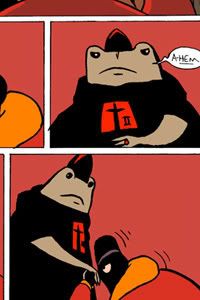
 in Star Wars: Emperor Palpatine is a Shadow; a Sith Lord himself, he rules over his corrupt Empire, enforcing the rule of the Dark Side over the galaxy.
in Star Wars: Emperor Palpatine is a Shadow; a Sith Lord himself, he rules over his corrupt Empire, enforcing the rule of the Dark Side over the galaxy.
in Rice Boy: Spatch II is a Shadow; Corrupted by his late father's misguided mandate, he will go through any measures to ensure that he is the only true Fulfiller
-- In the POV of T-O-E, however, his Shadow, alongside Spatch II, may be the threat of losing immortality, or perhaps even the 'God' figure itself.
in VOID: Angus Blackader (by underwoodwriter) has shown himself to be a formidable Shadow. Commanding an enormous battalion and driven by greed and vanity, Blackader will crush anything in his path to get what he wants.V. THE THRESHOLD GUARDIAN - Something (parenthetical yet again) that stands to impede the HERO on his journey. This can come in the form of minor villains (or the Shadow's subordinates), puzzles or tests, or any sort of complication. There is oftentimes one standing at the First Threshold (to be explained in later lecture). Because it is such a long title, I often refer to Threshold Guardians simply as 'threshguards'.
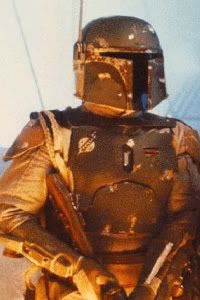
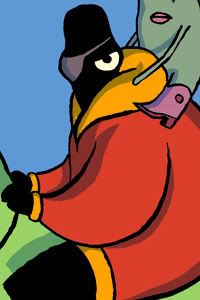
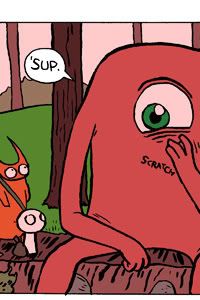
 in Star Wars: Boba Fett can be considered a Threshguard; he is not a true villain or Shadow, but he stands to impede the heroes in their journey.
in Star Wars: Boba Fett can be considered a Threshguard; he is not a true villain or Shadow, but he stands to impede the heroes in their journey.
in Rice Boy: Similar to Mr. Fett, Golgo can be considered a Threshguard; while he doesn't directly oppose the heroes, he is employed by Spatch II to do so.
In a more literal sense, Bor the Very Large is a very literal Threshguard, in which he stands in Rice Boy's way and makes it difficult to find the Tree Keeper.
in VOID: The entire gang of Murphy's Law can be considered a Threshold Guardian to many. They are an assortment of criminals, pranksters and troublemakers whose sole purpose is to incite chaos and nonsense in the city.VI. THE SHAPESHIFTER - An entity that frequently changes appearance or alignment, to inspire mystery, confusion or doubt. If a Shapeshifter is present among the HERO's allies, they put loyalty into question and create doubt or suspense. A Shapeshifter may be considered a Homme/Femme Fatale, in that their existence is always a threat, no matter how helpful they may seem. As part of their nature, they can start as either an ally or an enemy, and may end the story wherever it befits them (an ally who turns enemy, and enemy who turns ally, etc.)

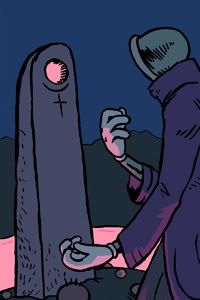
 in Star Wars: In the Ep.I-III trilogy, Emperor Palpatine played the role of a Shapeshifter for a while; it was not known until Ep.III that he was a Sith Lord, so when he played favors to the young Anakin, the council had doubts about the supposed Supreme Chancellor.
in Star Wars: In the Ep.I-III trilogy, Emperor Palpatine played the role of a Shapeshifter for a while; it was not known until Ep.III that he was a Sith Lord, so when he played favors to the young Anakin, the council had doubts about the supposed Supreme Chancellor.
in Rice Boy: The God figure that T-O-E works for may be considered a Shapeshifter; he keeps a lot of things hidden, and often inspires doubt in T-O-E whether or not his job is justified.
in VOID: The Star Child (by MyHatEatsPeople) is shown to take the forms of others, but appears directly to Wizzie Bells in a dream. Her motives are vague and unexplained, but she forces a change in Wizzie, whether or not Wizzie is ready for it.VII. THE TRICKSTER - A character that defies the status quo; points out the folly and hypocrisy of the world and brings the HERO down to size, often challenging the HERO's right as a hero. Represents the energy of mischief and the desire for change. Are oftentimes a source of (comic) relief or a release of tension, who brings calm and balance to a story that may be getting too tense.
in Star Wars: Han Solo is also a Trickster alongside his Cynical Hero role; oftentimes, the "Whys" are brought on by him, and universal standards are brought into question; to quote Mr. Solo himself, "Hokey religions and ancient weapons are no match for a good blaster at your side, kid."
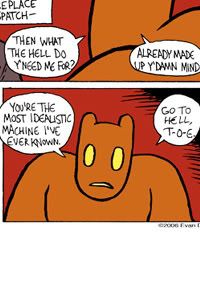

in Rice Boy: Calabash may be considered a trickster. Unlike T-O-E who took his job seriously, Calabash had the incentive to question the job, even going as far as to defy it.
in VOID: Cue the Anti-Cupid (by Majikura) is a shining example of a Trickster. She will figuratively AND literally question the very nature of VOID City, her opponents, and even the comics she's featured in. Nothing is safe from Cue's cynical brand of humor.THIS IS AN IMPORTANT THING: A character doesn't have to have the same archetype throughout your entire story! Though it is a basic characteristic of the Shapeshifter archetype to 'change masks', there are times wherein other characters may take up different roles; when Obi-Wan held off Darth Vader so Luke and company could escape, he rose from Mentor to Hero for that brief moment; it didn't take long for Rice Boy to make friends with Gerund, but the fact that Gerund keeps eating all his food makes him a Threshguard of a small scale.
THIS IS ANOTHER IMPORTANT THING: You can mix and match archetypes! There's no reason you can't have two things at once! In the Star Wars Ep.I-III trilogy, Palpatine is both a Mentor AND a Shadow (a part of his Shapeshifter nature). In Rice Boy, T-O-E may be considered a Herald Hero, because he has his own journey to undertake. Commonly enough, sometimes Void characters who battle each other (Threshguards, in a sense) become friends, and allies are gained.
Now as the case is with Void, your character will automatically default to The Hero (in any of its forms), because in your comics, no matter WHO your character is, YOUR character is the protagonist. Even Crazy Samurai, as villainous as he is viewed by other characters, is the Hero of his story. There may be cases wherein your character serves other purposes (like Rax's Sol; quite obviously, Sol plays the role of Mentor), but in those cases you would mix-match Hero on top of another archetype, keeping within the principle that your character is the main character of your comics (so with the previous example, Sol's comics are still about Sol; thus, he is a Mentor Hero of his story).
YOUR ASSIGNMENT, SHOULD YOU CHOOSE TO TAKE ITWith an understanding of how character archetypes function in a story, I would like you to take your VOID character, think about other characters related to him/her/it, and try to find archetypes that match them. What kind of Hero is your character? Who are his Shadows? Does he have a Mentor? Is there a Herald present? List as many as you can as it relates to your character; I don't want to see a whole bunch of trivial things like "Tying shoelaces in the morning = Threshguard", even if it is true.
I SHALL DO AN EXAMPLE BELOW. COPY THE FORMAT AND FOLLOW IN MY STEAD. YOU CAN DO IT! :mellow:













99 Problems and a Cat
Croi Desai vs. HR99
@ 12:30 AM Apr 23rd